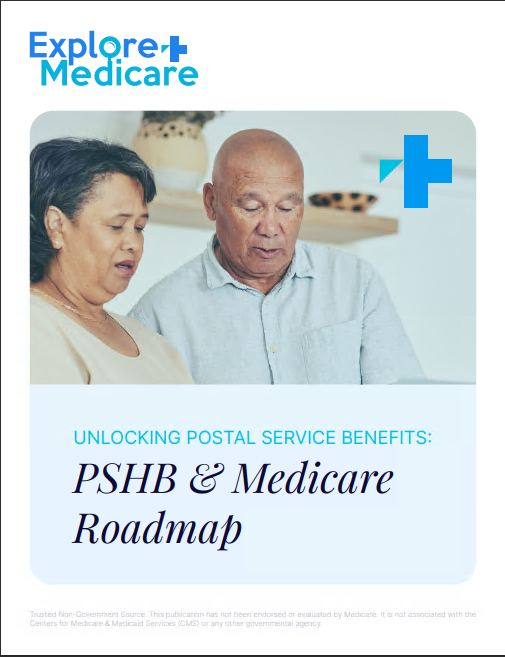Key Takeaways:
-
Not all Medicare plans offer the same value, and some may include hidden costs or limitations that don’t fit your needs.
-
Understanding premiums, deductibles, provider networks, and prescription drug coverage can help you find a plan that truly benefits you.
The Fine Line Between a Good Medicare Plan and a Bad One
Choosing a Medicare plan is a major decision, but with so many options, how do you separate the ones that work from those that might leave you with unexpected expenses or inadequate coverage? It all comes down to looking beyond the surface and focusing on the real benefits and potential drawbacks of each plan.
Understanding Your Medicare Options
Medicare comes in multiple parts, and each one has different cost structures and coverage details. Before jumping into any plan, you need to fully understand what each part covers:
-
Medicare Part A (Hospital Insurance): Covers inpatient hospital stays, skilled nursing care, and hospice care.
-
Medicare Part B (Medical Insurance): Covers doctor visits, outpatient care, and preventive services.
-
Medicare Part C (Medicare Advantage): Offers an alternative to Original Medicare with additional benefits.
-
Medicare Part D (Prescription Drug Coverage): Helps cover the cost of prescription medications.
Each of these parts has costs associated with them, including premiums, deductibles, and co-pays. Some plans may seem attractive at first glance but could come with higher costs down the line.
Premiums vs. Out-of-Pocket Costs: Finding the Balance
Many people focus solely on the monthly premium when selecting a Medicare plan, but that’s just one piece of the puzzle. A plan with a low premium could have high deductibles, co-pays, or coinsurance costs that add up quickly.
Consider These Factors When Comparing Costs:
-
Deductibles: How much do you have to pay before your coverage kicks in?
-
Co-pays and Coinsurance: What percentage of the cost do you have to pay for doctor visits, hospital stays, or prescriptions?
-
Out-of-Pocket Maximums: Some plans have caps on how much you will pay in a year, while others don’t.
-
Hidden Fees: Some plans charge for services you may not expect, like out-of-network care.
Provider Networks: Will You Be Able to See Your Preferred Doctors?
Not all Medicare plans allow you to see any doctor or specialist you want. Provider networks are a major factor in whether a plan is right for you.
-
Original Medicare: Generally allows you to see any doctor or specialist who accepts Medicare.
-
Medicare Advantage Plans: Often require you to use a specific network of doctors, and going outside that network may result in higher costs.
-
Specialist Access: If you need specialized care, make sure your preferred doctors are covered under the plan you choose.
Before signing up, check whether your doctors, hospitals, and specialists are in-network. You don’t want to be caught off guard by a plan that limits your choices.
Prescription Drug Coverage: Don’t Overlook the Details
Prescription drugs can be a major expense, so it’s crucial to make sure the plan you choose provides the right coverage.
-
Formulary Lists: Each Medicare Part D and Medicare Advantage plan has a list of covered drugs. If your medication isn’t on the list, you may have to pay full price.
-
Tiered Pricing: Many plans divide drugs into tiers, with lower-cost generics in the lowest tiers and brand-name or specialty drugs in higher tiers.
-
Preferred Pharmacies: Some plans offer lower costs when using specific pharmacies. If you prefer a particular pharmacy, check if it’s included.
-
Coverage Gaps: While the Part D coverage gap (donut hole) is gone in 2025, there are still cost-sharing rules you need to understand.
Extra Benefits: Are They Worth It?
Some Medicare plans advertise additional perks, like dental, vision, hearing, and fitness benefits. While these extras can be useful, they shouldn’t be the main reason you choose a plan.
-
Are the benefits truly valuable? Some plans offer extra benefits but at the expense of higher medical costs elsewhere.
-
Do you need these services? If you don’t need certain extras, you may be better off with a plan that focuses on strong medical and prescription coverage.
-
Are there restrictions? Some additional benefits come with limitations, such as specific provider networks or coverage caps.
Medicare Enrollment Periods: Timing Matters
Choosing the right plan is important, but so is signing up at the right time. Missing key enrollment periods can leave you with penalties or limited options.
-
Initial Enrollment Period (IEP): Starts 3 months before you turn 65 and ends 3 months after.
-
General Enrollment Period (GEP): Runs from January 1 to March 31 each year for those who missed their IEP.
-
Medicare Open Enrollment Period: From October 15 to December 7, allowing changes to Medicare Advantage and Part D plans.
-
Special Enrollment Periods (SEP): Available for qualifying life events, such as moving or losing employer coverage.
Understanding these timelines can help you avoid gaps in coverage or late enrollment penalties.
Avoiding Common Medicare Pitfalls
Medicare can be confusing, and it’s easy to fall into traps that leave you with a plan that doesn’t meet your needs. Here are a few common mistakes to watch out for:
-
Only looking at the monthly premium without considering overall costs.
-
Not checking if your doctors and hospitals are in-network.
-
Ignoring prescription drug coverage details and formulary lists.
-
Overestimating the value of extra benefits.
-
Missing enrollment deadlines and facing penalties.
By staying informed and knowing what to watch for, you can make a smarter decision when choosing your Medicare plan.
Making the Right Choice for Your Health and Budget
Selecting a Medicare plan is a big decision, but by weighing all the costs, coverage options, and benefits, you can make an informed choice that meets your needs. Always review your plan each year to ensure it still aligns with your health situation and budget.





